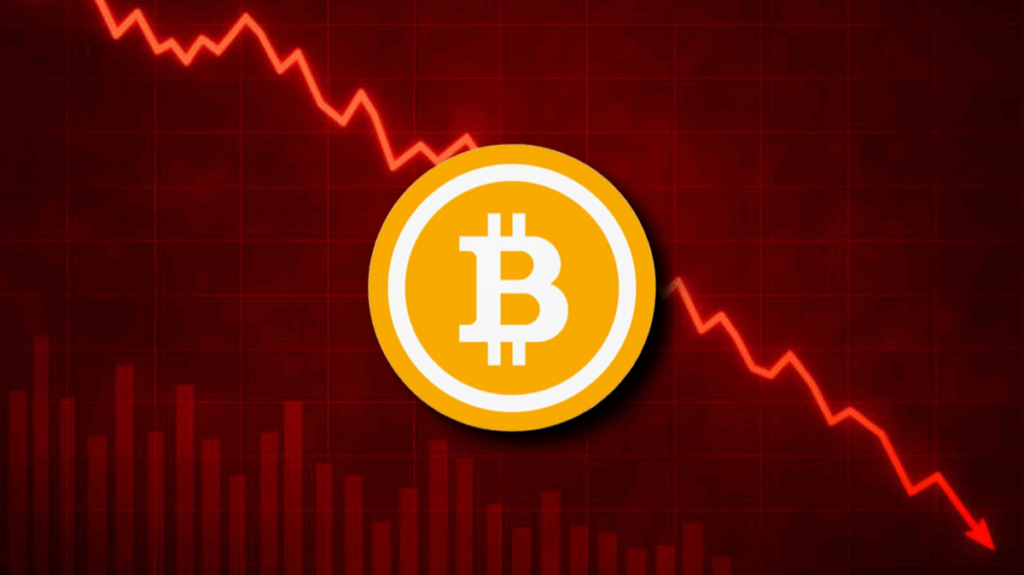Bitcoin Price Falls to $113,000 Amid Tariff Fears and Jobs Data

The price of Bitcoin fell approximately 4.2% over a two-day period, sliding from the $118,000 range on July 31, 2025, to around $113,000 by August 2, 2025, as broader crypto market turbulence took hold.
The total crypto market cap dropped from roughly $4 trillion to $3.66 trillion, erasing about half of Bitcoin’s gains from its July rally, which had pushed prices to highs near $123,000. Despite Bitcoin’s long-term strength, with an 8.3% gain in July marking its fourth consecutive positive month, the recent pullback highlights a mix of macroeconomic concerns, technical breakdowns, and shifting investor sentiment.
Stay In The Loop and Never Miss Important Bitcoin News
Sign up and be the first to know when we publishKey Drivers Behind the Decline
Renewed fears of U.S. tariff proposals under the Trump administration, including potential 50% reciprocal tariffs on imports, sparked significant market unease late in the week. These proposals raised concerns about rising inflation, a stronger U.S. dollar, and reduced global trade, prompting investors to pull back from risk-sensitive assets like cryptocurrencies. Bitcoin briefly dipped below $113,000 on August 1 as these tariff-related fears intensified, with analysts noting that such policies could delay Federal Reserve rate cuts, further pressuring speculative investments. The crypto market’s risk-off mood was compounded by broader equity market declines, with the Dow Jones dropping over 500 points on August 2.
Disappointing U.S. economic data added to the downward pressure, as July’s jobs report showed only 73,000 jobs added against expectations of 110,000. This weak figure fueled recession fears, contributing to a sharp sell-off across risk assets. The Federal Reserve’s decision to maintain steady interest rates at its July 31 meeting, coupled with reduced expectations for rate cuts—now projected at just two by year-end—further strained Bitcoin’s appeal as a non-yielding asset. The crypto market saw a 5.87% plunge on August 1, driven by a stronger dollar and tighter monetary conditions that reduced liquidity for speculative investments.
Massive liquidations in the crypto market, totaling between $600 million and $750 million over the past 48 hours, amplified the price drop. Overleveraged positions, particularly in altcoins but also affecting Bitcoin, triggered a cascade of forced selling as prices broke key support levels like $117,000 and $115,000. High funding rates and overbought conditions from July’s rally left the market ripe for a correction, with stop-loss orders adding to the downward momentum. This leverage unwind created a feedback loop that deepened the short-term decline.
Profit-taking and portfolio rebalancing at the end of July also played a role, following Bitcoin’s strong 8.3% monthly gain to close near $116,500. Technical indicators, such as an overbought Relative Strength Index and bearish MACD divergence, signaled that the rally was losing steam. Additionally, inflows into Bitcoin and Ethereum exchange-traded funds, which had been robust at $12 billion earlier in July, slowed significantly toward month-end amid these macro headwinds.
Historically, August has been a challenging month for Bitcoin, with an average decline of 14.7% over the past 14 years and negative closes in nine of those years. The past three Augusts have been consistently weak, adding a seasonal layer to the current downturn. Technically, Bitcoin’s failure to hold the $117,000–$120,000 range from late July led to a breakdown toward lower supports around $112,000–$113,000. While some analysts point to concentrated accumulation at these levels, a failure to hold could push prices toward $106,000–$108,000 if market sentiment remains weak.
Despite the short-term correction, many analysts see this dip as a buying opportunity, driven by external macro shocks rather than fundamental issues with Bitcoin itself. Long-term forecasts remain optimistic, with projections of $125,000 to $150,000 by year-end, fueled by ongoing the ongoing treasury boom, institutional adoption, and ETF flows.

